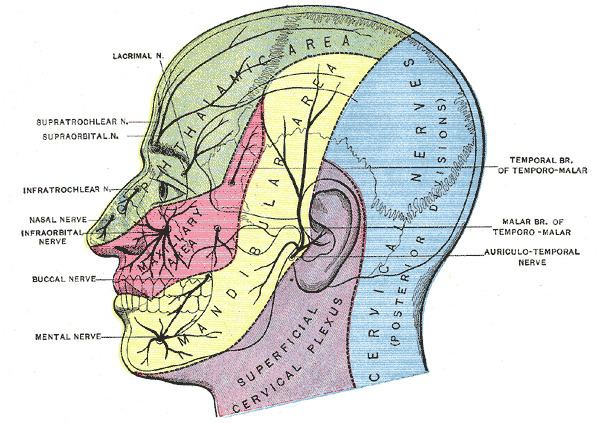Dorlands/Elsevier n_05/12565268 FMA 53066 | Latin Nervus buccalis TA A14.2.01.073 | |
 | ||
Innervates | ||
The buccal nerve (long buccal nerve) is a nerve in the face. It is a branch of the mandibular nerve (which is itself a branch of the trigeminal nerve) and transmits sensory information from skin over the buccal membrane (in general, the cheek) and from the second and third molar teeth. Not to be confused with the buccal branch of the facial nerve which transmits motor information to the buccinator muscle.
Contents
Structure
It courses between the two heads of the lateral pterygoid muscle, underneath the tendon of the temporalis muscle, and then under the masseter muscle to connect with the buccal branches of the facial nerve on the surface of the buccinator muscle.
Function
Small branches of the buccal nerve innervate the lateral pterygoid muscle. It also gives sensory branches to the cheek.
Related nerves
The facial nerve (CN VII) also has buccal branches, which carry motor innervation to the buccinator muscle, a muscle of facial expression. This follows from the trigeminal (V3) supplying all muscles of mastication and the facial (VII) supplying all muscles of facial expression.
